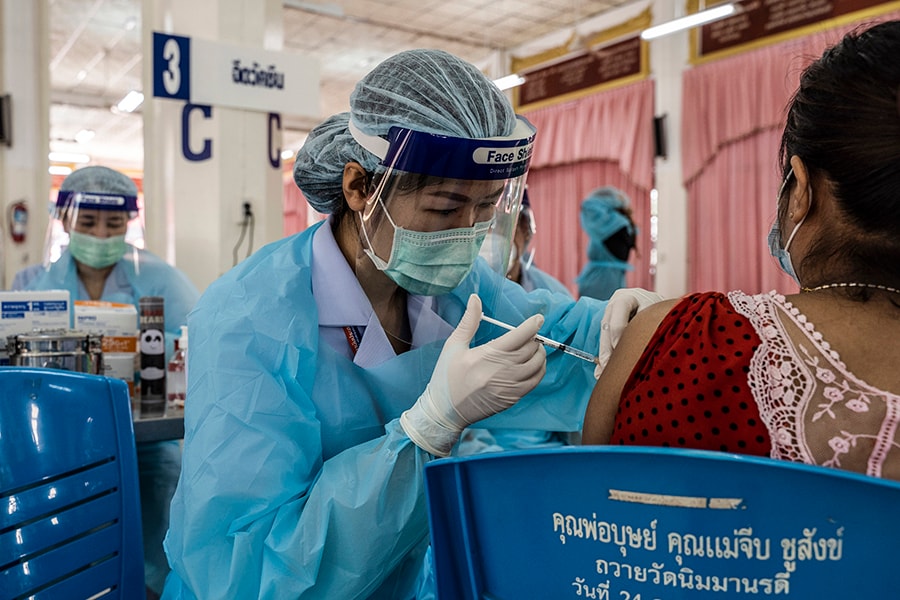
How Asia, once a vaccination laggard, is revving up inoculations
South Korea, Japan and Malaysia have even pulled ahead of the US in the number of vaccine doses administered per 100 people
 A market stall worker receives a second dose of a Sinovac COVID-19 vaccination at Wat Nimmanoradee monastery in Bangkok on Wednesday, April 7, 2021. During the Delta variant's spread in the summer, South Korea battled its worst wave of infections; hospitals in Indonesia ran out of oxygen and beds; and in Thailand, health care workers had to turn away patients.
A market stall worker receives a second dose of a Sinovac COVID-19 vaccination at Wat Nimmanoradee monastery in Bangkok on Wednesday, April 7, 2021. During the Delta variant's spread in the summer, South Korea battled its worst wave of infections; hospitals in Indonesia ran out of oxygen and beds; and in Thailand, health care workers had to turn away patients.
Image: Adam Dean/The New York Times
SINGAPORE — As the United States and Europe ramped up their COVID-19 vaccination programs, the Asia-Pacific region, once lauded for its pandemic response, struggled to get them off the ground. Now, many of those laggards are speeding ahead, lifting hopes of a return to normality in nations resigned to repeated lockdowns and onerous restrictions.
The turnabout is as much a testament to the region’s success in securing supplies and working out the kinks in their programs as it is to vaccine hesitancy and political opposition in the United States.
South Korea, Japan and Malaysia have even pulled ahead of the U.S. in the number of vaccine doses administered per 100 people — a pace that seemed unthinkable in the spring. Several have surpassed the United States in fully vaccinating their populations or are on track to do so, limiting the perniciousness of the delta variant of the coronavirus.
In South Korea, the authorities said vaccines had helped keep most people out of the hospital. About 0.6% of fully vaccinated people who contracted COVID had severe illness and about 0.1% died, according to data collected by the Korea Disease Control and Prevention Agency from May to August.
In Japan, serious cases have fallen by half over the last month, to a little over 1,000 a day. Hospitalizations have plummeted from a high of just over 230,000 in late August to around 31,000 on Tuesday.
©2019 New York Times News Service




